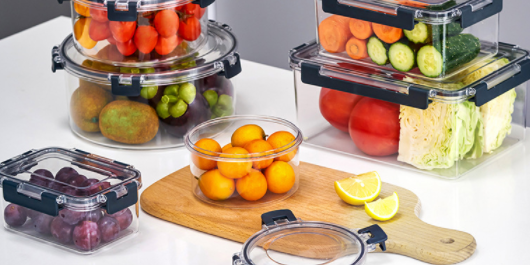Selecting the appropriate type of plastic for food packaging is crucial to ensure both product safety and environmental responsibility. Various types of plastics offer different properties and benefits for packaging applications.
- PET (Polyethylene Terephthalate): PET is commonly used for beverage bottles and certain food containers. It’s lightweight, transparent, and recyclable, but it may not be suitable for hot foods or products with high fat content.
- HDPE (High-Density Polyethylene): HDPE is known for its durability and resistance to chemicals. It’s often used for milk jugs and detergent bottles. It’s considered safe for food packaging and is recyclable.
- PP (Polypropylene): PP is heat-resistant and suitable for microwaveable containers. It’s often used for deli containers and yogurt cups. It’s a versatile plastic that can be recycled.
- PS (Polystyrene): PS is used for products like foam food trays and clamshell containers. While it offers good insulation properties, it’s less commonly recycled and might pose environmental challenges.
- PLA (Polylactic Acid): PLA is a bio-based plastic made from cornstarch. It’s compostable and suitable for cold food applications, but it may not withstand high temperatures.
- Others: There are various other plastics used in food packaging, such as PVC (Polyvinyl Chloride), which is less common due to environmental concerns, and LDPE (Low-Density Polyethylene), often used for plastic bags.
When choosing a plastic for food packaging, it’s essential to consider factors like the type of food, intended use, heat resistance, recyclability, and environmental impact. Being mindful of these factors can help strike a balance between food safety and sustainability.

























